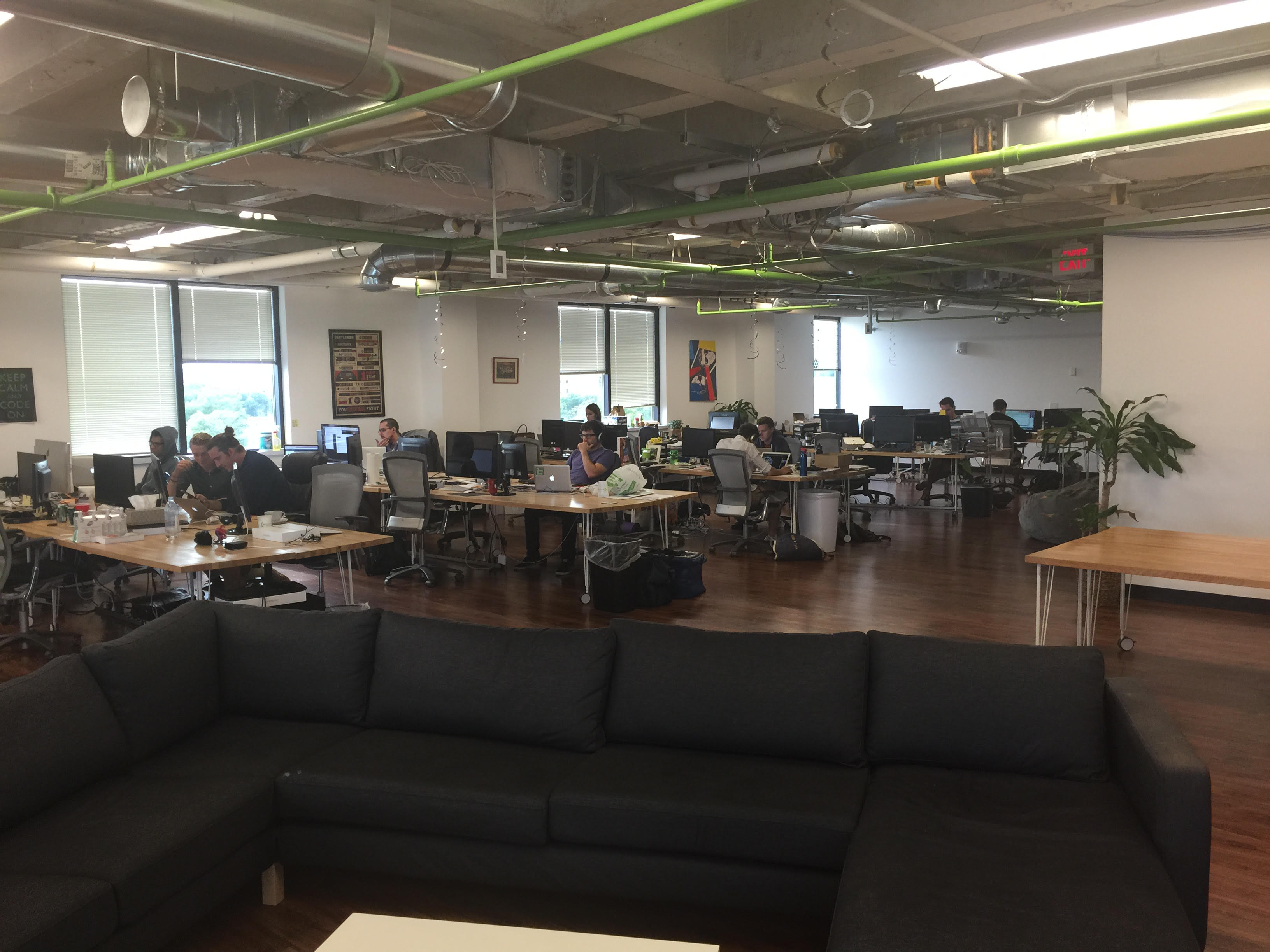This Startup Failed In Year One And Is Now Doing Over $6M In Sales Per Year
This post originally appeared on Forbes.com.
On January 19th Kyle Porter, CEO of SalesLoft, a sales technology startup out of Atlanta came to chat with the Building The Sales Machine community here in New York City about the challenges of building company as it relates to culture, values and building the sales organization. Kyle and the SalesLoft story is compelling because the business was pretty much a failure in the first year. But now, they are an 80 person company and grew sales by 1000% in 2015. Moreover, they went from $1M to $6M run rate in the past 5 quarters and was rated the #1 Best Place to Work in Atlanta.
As someone who is building a sales-facing technology startup myself, this story is especially compelling to me.

So how did they do it? Here is what Kyle had to say.
Dan Reich: How did you get started with Salesloft?
Kyle Porter: When we started this company, we flat out failed in the first 12 months. In 2011 I started the company and had no idea what I was getting into. I was a really good salesperson but had no idea had to start a company.
A sales person is the closest job to an entrepreneur. It’s the role where you control your own destiny the most. And you have to have this relentless pursuit to make it happen. I had that gene inside of me. But I didn’t understand software development. I didn’t understand the culture of an Engineering Org, the prioritization of product management philosophy. I didn’t understand that you can only do so many thing at once. I had these guys build, build, build and ultimately I scattered them too thinly.
The other big thing that I was missing was the people’s culture. Think to yourself right now about how you think people should behave… If you start a company you HAVE to inject those things into your business. I didn’t make that happen. I had people that I hired that I thought might be good, but the culture spun out of control.
On the reboot: I’m going to start over from scratch but do 2 things wildly different. 1 I’m going to put thought into product management 2. Pay a ton of attention to culture.
Reich: What has become of the modern sales organization?
Porter: You either have a modern sales organization or you don’t. Are you striving to do things better? Are you using the processes and tools that are available today to drive your team forward? What I keep learning is that there’s stages inside these sales organizations.
When I started sales loft we had this hot thing that a lot of people wanted. So we could reach out to anyone with a “soft touch” and were able to kind of “carpet blast” the universe and get some really good numbers. Eventually, you need to go deeper and build real relationships with people.
If you’re out there and have a sales process that’s working but doesn’t require significant sales skills, you should be skeptical.
If you’re sending emails and people are responding, but you’re not actually diving in and solving problems and going deep, building relationships, connecting with people… those sales are going to eventually dry up.
That’s what I’ve learned about the modern sales organization. The good ones aren’t taking anything for granted. They’re going deep to build true problem-solving relationships with their buyers. They figure out ways to get really personal and interactive with their customers over time.
Reich: What should the SDR and Account Management interaction look like?
Porter: Two years ago this was shocking stuff, but now we’ve all seen the SDR [Sales Development Movement]. We’ve seen the specialization in sales between the people who prospect and bring in the business, and those that nurture the relationships and close it down. Now with the specialization, you’re seeing both disciplines get better at their craft. But now those two roles are coming together a bit more. They have empathy for the role of the other person.
Reich: What are your core values and why are they important to SalesLoft?
Porter: As an executive at your company, work hard to inject your personal core values into your business. What are the 3 things that matter most to me? 1. Positive 2. Self Starting 3. Supportive. The first person I hired: are they positive, are they self-starting are they supportive. This ran down to everything we’ve done. The difference has been night and day.
Now as you grow, it get’s harder and harder to control this at a company level, but you can definitely control it at a team level. So hiring the right people to start, then putting your best people into leadership positions, that embody and understand your values, then having them hire their teams to those values and letting them run with it; eventually you have a solid team, built around your culture.
We went from 3 core values, then my team came to me and said, hey I see a few other things we’d like to talk to you about. “We see people who are positive, supportive and self-starting at this company but they leave a bit to be desired. We also see people that are doing things that are not 1, 2, & 3 but we love it. So we went out to dinner and I asked my team to write down: Who are the top 7 people at this organization, that if we cloned them it would lead us to market domination? Write out the top 5 traits of those people and put them in the middle. Sure enough, 1. Positive. 2. Self Starting 3. Supportive. rose to the top, from that we mined out 3 additional core values. 4. Empathetic 5. Transparent 6. Exceptional.
Reich: How can you use your core values to measure a team (hire, fire, train)?
Porter: I’m a super broken record when it comes to core values. I’m sure people say “Kyle’s an idiot, he says the same things over and over and over again.” Well, I might be. But you better believe everyone at SalesLoft remembers those 6 core values. No matter how long they’ve been there, they can walk you through them. That’s important. That means they run deep.
I’m a parent. I have an 18 month-old baby girl, Brooklyn. Every night before I put her to bed I tell her the rules of the house: be nice to Mommy and Daddy, be nice to others, be nice to yourself. I say that to her over and over until she gets it. If she does something dishonest or not fair. I’m going to tell her, “share, share share”. People think that the job of the CEO is to be some mad scientist and write these elaborate equations locked up in a whiteboard somewhere… The job of the CEO is to ingrain the vision and the values into your team. That simply takes repetition.
I’m the chief reminding officer.
Then I’m injecting it into the hiring process. We have a matrix. Anyone hiring at SalesLoft score candidates on a Matrix according to our core values. By the time I see a candidate in the 3rd round, “I’ll walk right in and ask what are the SalesLoft core values?”. If that person doesn’t know it, they’re out.
Then we work it into management. If I’ve seen that Alex has shown a ton of empathy to a vendor. I’m going to pull her aside, look her in the eye and tell her “thank you”, and explicitly call out what she did, how it tied back to our values and how great it was. All of our managers are trained to do that as well. It makes a difference.
I’ll do the same thing if with negative responses to the values. If I notice that Alex wasn’t attentive to a note that was sent around the office. I’m going to pull her aside again and say hey, you need to be up on this, it’s part of being successful. When you’re not up on this, it hurts our company and here’s why… and “I know you’re better than that”. That matters.
Now, the reprimands are like 1:6 on the compliments. Go heavy on the positive. But stick to your cultures. That’s how you inject that shit right into the business!
Promote on culture values, hire on culture values, fire on culture values.






